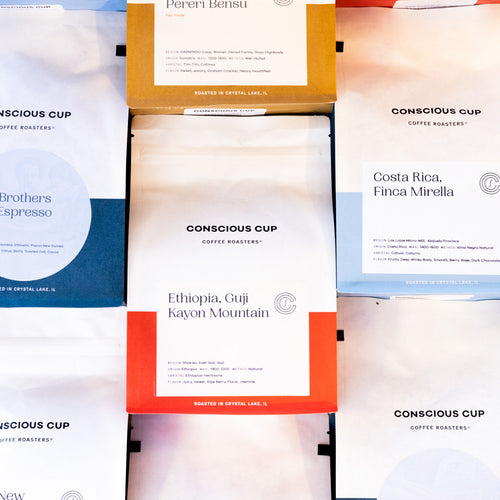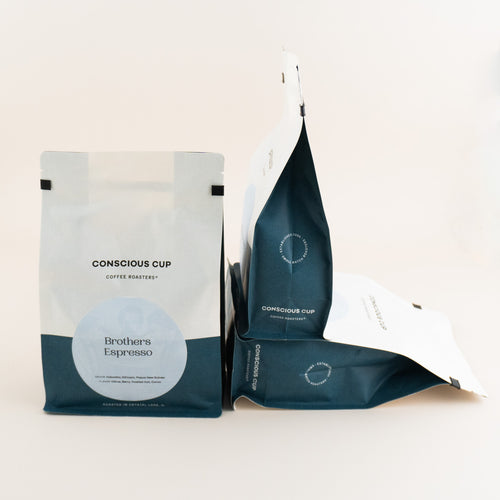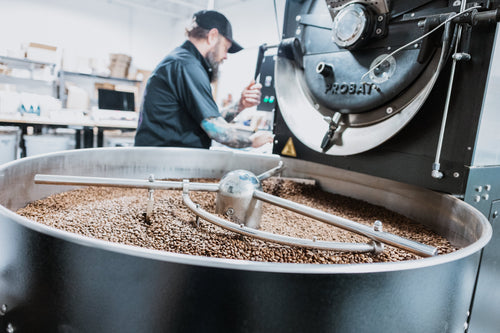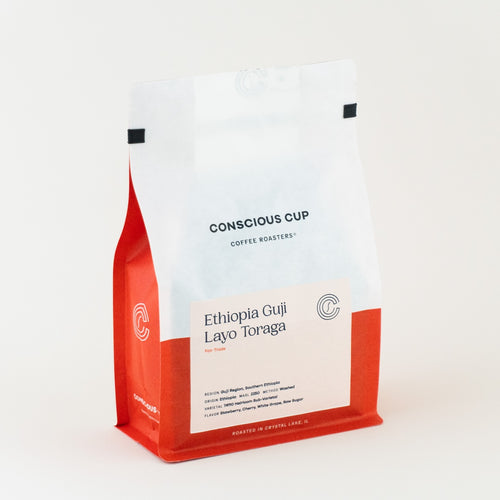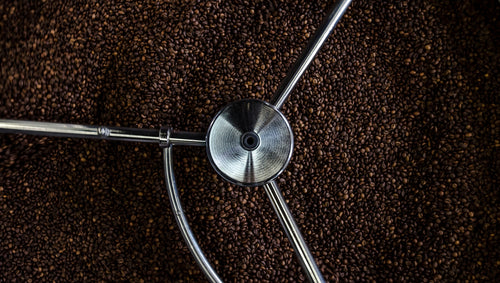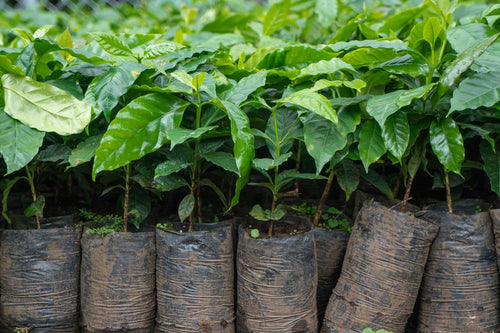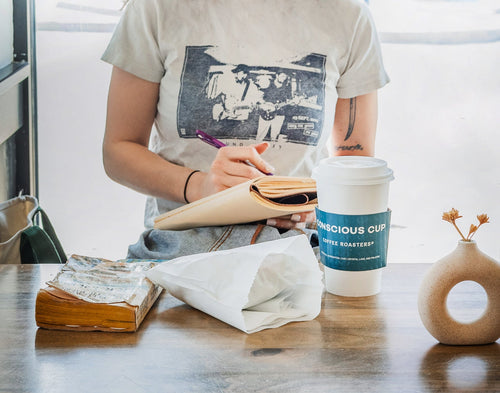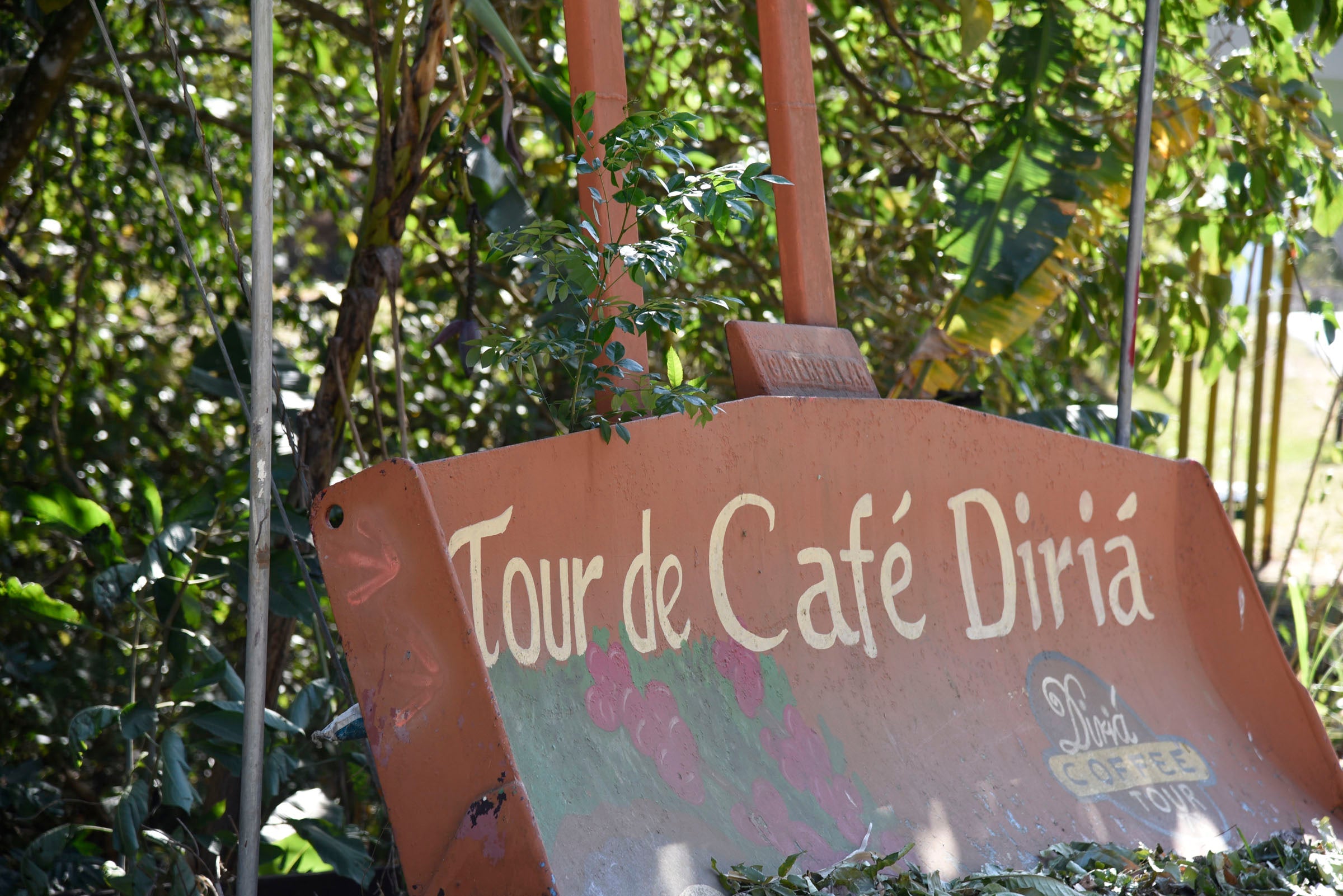Salimos del asfalto y subimos la colina siguiendo las indicaciones de Google Maps cuando el camino de tierra que teníamos por delante giró bruscamente y nos ofreció una vista escarpada y desconcertante. Estábamos un poco perdidos en el corazón de Guanacaste, en el noroeste de Costa Rica, en busca de Planta Procesadora Diria: ¡café!
Regla n.° 1: En estos puntos tan precipitados no se realiza un giro de tres puntos.

Con mucho cuidado, regresamos a la carretera en el subcompacto alquilado, bien pavimentado y con instrucciones que nos dieron los lugareños gracias a nuestro pobre español, y llegamos a tiempo para nuestro recorrido guiados por Dennis, nuestro amable guía en la planta de producción de café de Diria, de 53 años de antigüedad.
Decimos que "las cosas simples bien hechas enriquecen la vida", pero lo que hacemos en la cafetería está en gran medida bajo nuestro control: café de calidad, bien tostado, molido con precisión, agua pura a la temperatura adecuada, todo preparado con cuidado en manos de nuestros baristas.
Dennis señala que preparar una taza de café puede parecer sencillo, pero cultivar el café no lo es. Tan solo el proceso de cuidar el café desde la plántula hasta la primera cosecha del arbusto lleva entre tres años y medio y cuatro años.
Un buen recolector puede llenar una canasta con 25 libras de cerezas de café maduras en 45 minutos, ganando 1.000 colones, o 2 dólares si la cosecha pasa la prueba de alta calidad del agricultor. El trabajo se realiza en colinas empinadas, con cuidado de no tener serpientes ni insectos, y bajo un sol abrasador. Los costarricenses son madrugadores y se levantan antes del amanecer para aprovechar el clima relativamente más fresco. La siesta tiene un propósito aquí.
Diria atiende a una cooperativa de 150 fincas, que a su vez atraen a trabajadores de pueblos cercanos como Raphael, un lugar amplio y ordenado en la sinuosa carretera que se encuentra sobre Diria. El café del beneficio se combina con el de otros beneficios para los mercados locales y de exportación. Diria es un beneficio húmedo y paga a los agricultores una prima por el café orgánico fino y bien maduro, que equivale aproximadamente a una cuarta parte del café que procesa.
Las últimas porciones de la producción orgánica de la temporada se secaron en un patio debajo del beneficio húmedo. Los importadores y luego los tostadores pagan precios superiores por café verde orgánico de calidad superior.
El café de primera calidad que queda en Diriá no es orgánico y se seca en máquinas, o es de segunda calidad y se destina al consumo en Costa Rica, tal vez en productos de panadería o café de supermercado enriquecido con azúcares y saborizantes. Los granos de segunda calidad se secan en contenedores bajo el sol de Costa Rica y con aire caliente impulsado desde las máquinas de secado y la tostadora de Diriá.
Dennis señaló con orgullo que el café Diria se cultiva a la sombra, como resultado del cambio que se dio en Costa Rica a fines de los años 80, cuando se pasó de un enfoque de calidad de producto a un café fino que genera mayores ganancias. El café crece bajo árboles de mango, aguacate y anacardo. En general, cada cosecha madura en un momento diferente. Una ventaja es que los trabajadores agrícolas no tienen que estar lejos de sus familias para migrar de una región a otra en busca de trabajo, dijo Dennis. Las comunidades y las familias son más estables y los niños pueden asistir a la escuela. Otra ventaja: la sombra produce arbustos de café mejores y con mayor vitalidad.
Como beneficio húmedo, Diria necesita agua, que se recoge durante la temporada de lluvias (finales del verano y otoño) en enormes cisternas desde el laberinto de techos de metal de la planta. El agua del beneficio se utiliza para clasificar el café. Los granos poco maduros y demasiado maduros flotan y se separan. Las cerezas se muelen para eliminar la piel, el mucílago y la cascara plateada de los granos duros y deseables que se encuentran dentro de la cereza. Los subproductos de la piel y el mucílago se utilizan como abono o alimento para el ganado.
Para promover la sostenibilidad ecológica, el agua que se utiliza en Diriá se filtra en tres estanques: primero con piedra caliza, luego un estanque de algas y, por último, un estanque con nenúfares y peces tilapia. Si bien no es potable, el agua se recicla en el beneficio húmedo o se utiliza para regar los cultivos. Al final de la cosecha de café, los agricultores, recolectores y trabajadores del beneficio hacen una fiesta, pescando tilapias para darse un festín. Como la cosecha de esta temporada termina, la fiesta está cerca.
Dennis también demostró cómo rastrillar el café en el patio, empujando con fuerza los granos. "Es como palear nieve, ¿no?", sonrió, reconociendo nuestras raíces en el Medio Oeste. Tal vez rastrillar el café sea más difícil, ya que en el pico de la cosecha los trabajadores empujan con fuerza quince centímetros de densos granos de café.
De cada fanega de 25 libras de cerezas, surgen sólo 8 libras de granos de café verde listos para el mercado. Estos granos, tostados con cuidado, perderán otro 20% de peso antes de embolsarse para la venta minorista o para su uso en la elaboración de café expreso.
La tostadora de Diria es una máquina antigua de estilo steampunk que Dennis manipula con paciencia para mostrárnosla. Los engranajes hacen girar ruidosamente un tambor esférico sobre una llama de gas rugiente. Se trata de una operación brutal que requiere de una habilidad adquirida con mucho esfuerzo para producir un tueste consistente.
De regreso a la colina, entramos a una hermosa sala de degustación donde Dennis presentó a mi esposa Roseanna, a mi hermana Denise y a mi cuñado Ray, a las delicias de una cata formal. Los cafés finos orgánicos y no orgánicos se diferenciaban claramente en aroma y sabor, tostados al mismo nivel ligero en una pequeña tostadora de muestra. El café orgánico era fresco y limpio; el otro era más oscuro por la naturaleza de su secado y tenía un sabor tostado con el que quizás estés familiarizado, pero que a mí me parece opaco y sin distinción.
Ray y yo disfrutamos de una agradable taza de café caliente, con un tueste final más oscuro, como es típico en Costa Rica, que tenía un sabor tostado dominante. En el calor del día, terminamos con una deliciosa bebida de café, vainilla y helado antes de desearle lo mejor a Dennis y tomar indicaciones cuidadosas para el camino de regreso panorámico, sinuoso pero no demasiado escarpado hacia Playa Carillo y Playa Samara, donde nos estábamos quedando.
Lo mejor para ti,
Jacobo
